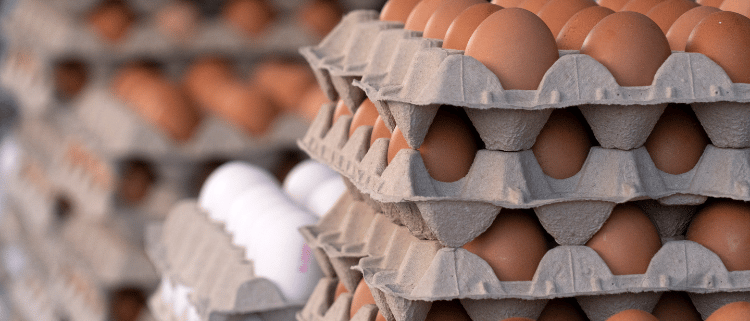Sustaining egg quality in laying hens
Maintaining egg quality for longer is key to enabling longer laying cycles, which is required to reduce economic cost and environmental footprint of egg production.
Author: Gwendolyn Jones, PhD, Product Manager Gut Agility Activators
Published in International Poultry Production, June 2022
A tough economic climate, combined with consumer concerns around environmental impact, are driving the need for increased laying cycle lengths in egg production. However, a prerequisite to achieving profitable longer laying cycles is the ability to maintain the quality of eggs produced by older hens.
Genetic and nutritional advances made to support the productivity of key organs involved in egg production may help sustain egg quality for longer. The benefits of making hens lay longer are both financial and environmental. For example, it has been calculated that for an increase in 10 weeks of production, 1g of nitrogen could be saved per 12 eggs produced. This again would reduce the nitrification impact of egg production significantly. Longer laying cycles enhance lifetime egg production per hen housed, which also means a reduction in the number of hens required to produce the same number of eggs. This has knock-on effects not only for the environmental footprint, but also for financial savings, as it reduces the amount of animal feed required to maintain the hens.
On the other hand, the main reasons for replacing laying hen flocks at around 72 weeks of age is a decline in egg numbers combined with a deterioration in egg quality during the production cycle. Extending laying cycles to a target of 92-100 weeks then calls for strategies that increase persistency in lay and stability in egg quality. It is well known that the reduction in quantity and quality of eggs over the egg production period is linked to ovarian ageing.
Studies have shown that one of the most important factors inducing ovarian aging is an imbalance between reactive oxygen species (ROS) and the antioxidant defence system. ROS accumulate during metabolic activity, which can be exacerbated in periods of high productivity and when the bird is challenged by stressors in its environment or feed.
Previous research in laying hens has demonstrated that a decline with age in antioxidant capacity of ovaries is linked to down-regulation of Nrf2 gene expression in the Nrf2-KEAP1 pathway, which is a signaling pathway involved in the mobilisation of cellular antioxidant defences.
On the other hand, additional studies have proven that it was possible to upregulate Nrf2 expression with a positive knock-on effect for gene expression of antioxidant enzymes and thereby delay the aging process of ovaries by nutritional means in laying hens.
Important egg quality parameters are eggshell strength, albumen height and Haugh units (HU), all of which decline as the hen ages throughout the laying period. Both albumen height and HU were depressed in studies where the Nrf2-KEAP1 pathway was impaired by the experimental design in laying hens. Recent research investigating the effect of supplementing laying hen diets with a gut agility activator on egg quality parameters in the late laying period and on the expression of Nrf2-KEAP1 pathway related gene expression in ovaries, indicated the potential for sustaining egg quality longer by upregulating the Nrf2- KEAP1 pathway in ovaries (Brouklogiannis et al 2022) .
Related articles
Laying persistency – 500 eggs in a single laying cycle in 100 weeks
Pancosma Gut Agility Activator product range
Scientific abstract: Anagnostopoulos et al (2022). Production performance and gut cytoprotective response in laying hens fed with different phytogenic levels
Scientific abstract: Brouklogiannis et al (2022). Dietary phytogenic inclusion level effects on egg production, egg quality and expression of ovarian cytoprotective genes in laying hens



